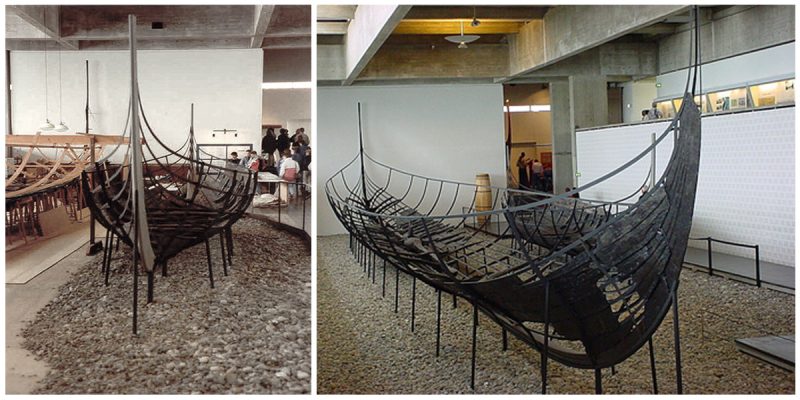Around the year 1070, five Viking ships were filled with stones and deliberately sunk at Skuldelev in Roskilde Fjord, in order to block the most important fairway and to protect Roskilde from an enemy attack from the sea. These ships, later known as the Skuldelev ships, were excavated in 1962. Plenty of stones had to be removed before reaching the underlying ships. A cofferdam was constructed around the vessels, the water was pumped out and the excavation was done like a land dig, with sprinklers to continually keep the wood wet. They turned out to be five different types of ships ranging from cargo ships to ships of war.

The Skuldelev ships provide a good source of information about the shipbuilding traditions of the late Viking Age and are now exhibited at the Viking Ship Museum in Roskilde.
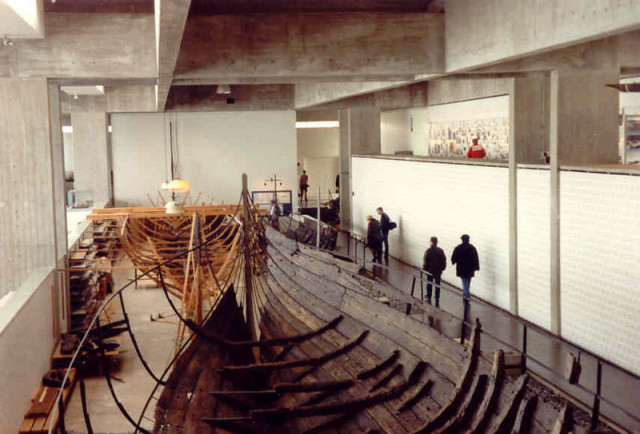
Skuldelev 1
This is a trading ship for travelling in an open sea. Probably the type of ship the Vikings called Knarr and it might be this kind of ships they used for sailing to Greenland and North America. It is 16 m long and 4.8 m wide and would have had a draught of 1 m with its crew of 6 to 8. The ship was constructed in Sognefjorden in western Norway around 1030 from thick planks of pine but has been repeatedly repaired with oak and linden wood during its lifetime.
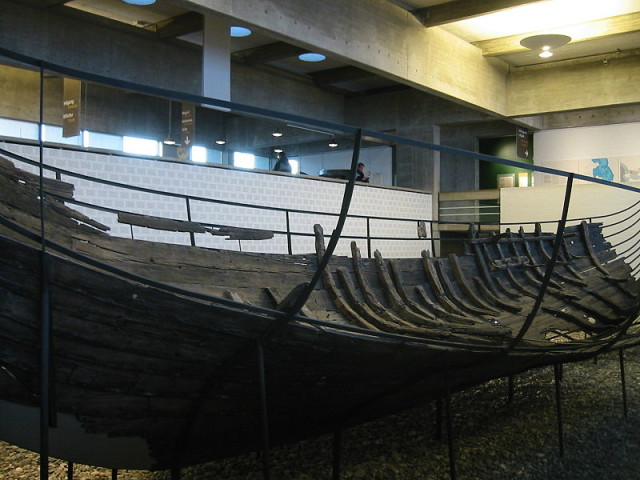
With a sail, of c. 90 m2 and only 2-4 oars, Skuldelev 1 could have navigated the Baltic Sea, the North Sea and the North Atlantic Ocean at a top speed of 13 knots (24 km/h). 60 % of the original ship has been preserved. Skuldelev 1 has been replicated as the Viking ship Ottar by the Roskilde Viking Ship Museum.
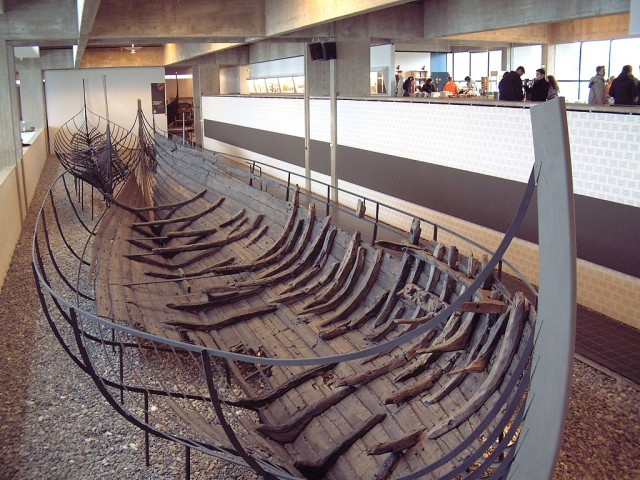
Skuldelev 2
This warship has become the most famous of the Viking ships from Skuldelev. Skuldelev 2 is an oak-built, seagoing warship. It is a longship, possibly of the skeid type. It is approximately 30 m long and 3.8 m wide, and would have had a draught of just 1 m with a maximum crew of 70-80. Dendrochronology showed that the ship was built in the Dublin area around 1042. The shape of the ship and its large sail of an estimated 112 m2, would have allowed for great speed, up to 15 knots (28 km/h) with a rowing crew of 60 and more while under sail. When the wrecks were found the archaeologists thought they found two ships and they named the ships number 2 and 4. Only later they found out that it was all from one very long ship and there was no ship number 4. For this reason, this ship is often named “Skuldelev 2-4“. It is one of the longest Viking ships ever found but was the least preserved of the Skuldelev ships, with only 25% of the original left.
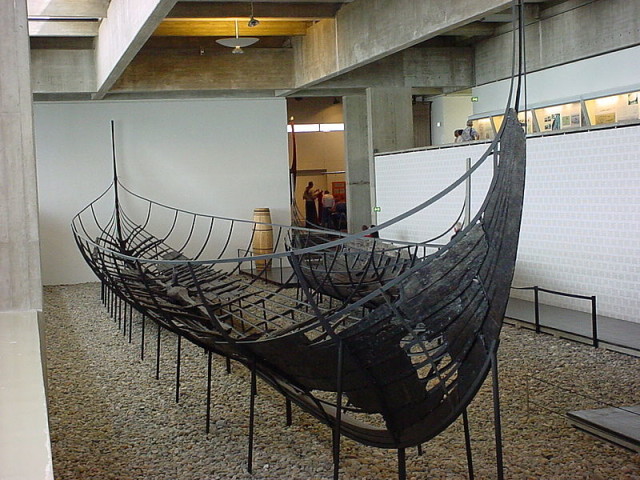
Skuldelev 3
Ship number 3 is probably the most reconstructed Viking ship in the world. The Skuldelev 3 is a 14 m long and 3.3 m wide cargo ship, possibly of the byrding type. It is made from oak, with a cargo capacity of 4-5 tons and a draught of just 0.9 m. It was constructed around 1040, somewhere in Denmark.
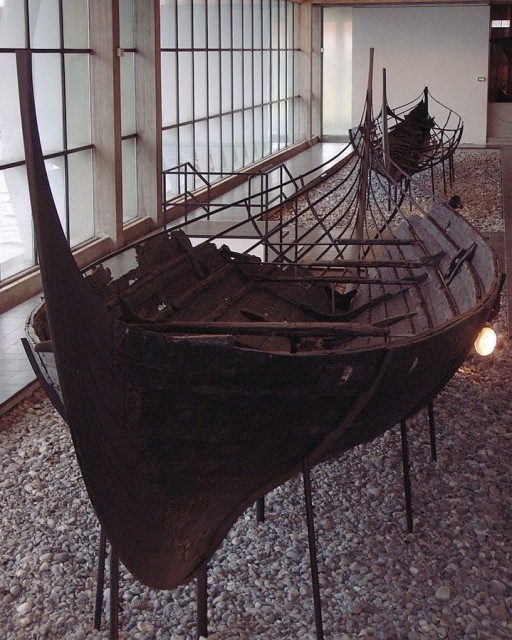
With a crew of 5-8 and a 45 m2 sail as its primary power, Skuldelev 3 would have been well-suited for shorter journeys in Danish waters and the Baltic Sea. It could reach a top speed of c. 10 knots (19 km/h). Skuldelev 3 is the best preserved of the Skuldelev ships, with 75 % of the original remaining. The Viking Ship museum has reconstructed Skuldelev 3 under the name of Roar Ege.
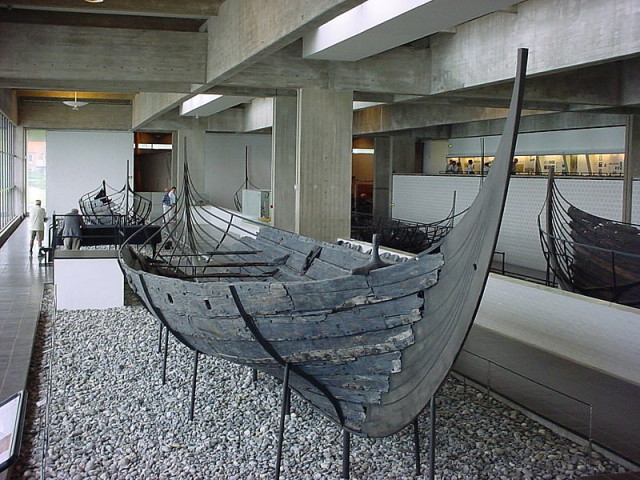
Skuldelev 5
Skuldelev 5 is a small warship of the snekkja type. It is 17.3 m long and 2.5 m wide and would have had a draught of 0.6 m with a crew of about 30. It is made from a mixture of wood types with oak, pine, ash and alder, and was built around 1030 in the Roskilde area. The ship was purpose-built for sailing in the shallow Danish waters and the Baltic Sea, using a mixture of new and reused planks in both its original construction and subsequent repairs. The top planks are equipped with holes for shield straps. With a sail of an estimated 46 m2, the average speed of the vessel has been calculated to have been 6 to 7 knots (13 km/h), with a maximum speed of about 15 knots (28 km/h). 50 % of the original has been preserved.
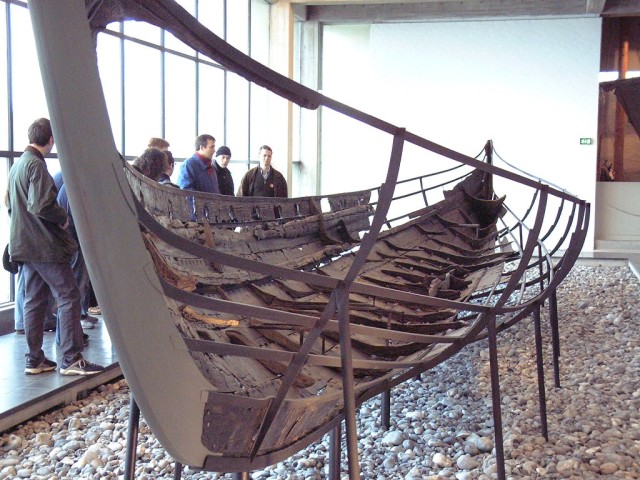
Roskilde Viking Ship Museum has replicated Skuldelev 5 as the replica Helge Ask. This is not the only replica of Skuldelev 3 however, the first being Sebbe Als, built in 1969 in Augustenborg, also in Denmark. Sebbe Als is able to reach a speed of 5 knots (9 km/h) on oars alone, and under sail, she does 12 knots (22 km/h).
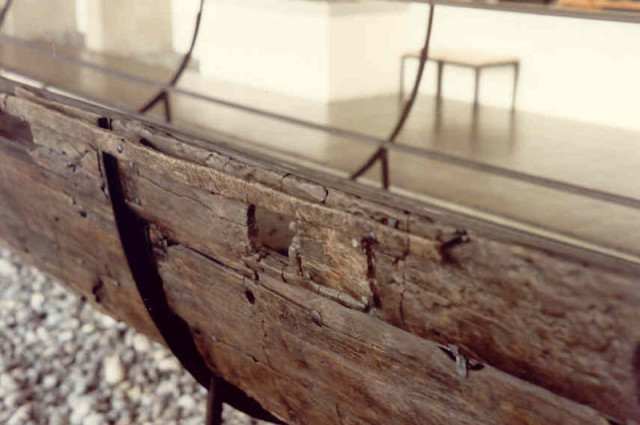
Skuldelev 6
Skuldelev 6 is an 11.2 m long and 2.5 m wide vessel of unknown purpose, equipped with oars and a sail. It is neither a warship nor a dedicated merchant ship. It had a good cargo capacity nonetheless, with a draught of 0.5 m and was probably built for fishing in the deep fjords of Norway. Like Skuldelev 1, Skuldelev 6 was built in Sognefjorden in western Norway around 1030, mainly from pine. It would have had a crew of 5-15. During its lifetime the ship was rebuilt somewhat, probably to be deployed as a coastal cargo ship. In this state, it would have been known as a Ferje, a general term for smaller cargo vessels. 70% of the original ship has survived.
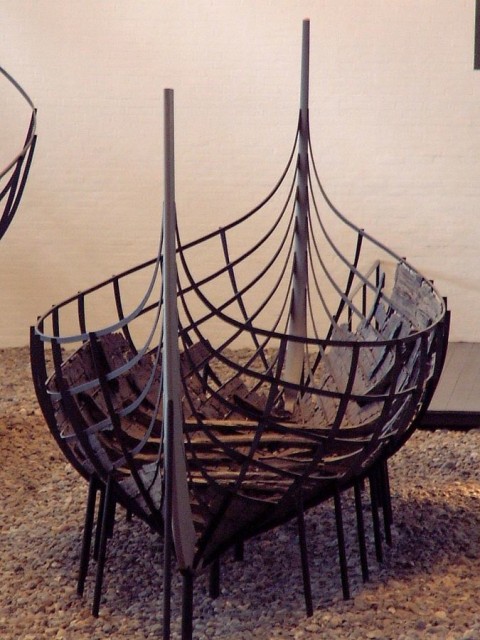
Skuldelev 6 has been replicated as Kraka Fyr in 1998 by the Roskilde Viking Ship Museum. In 2010, the museum replicated the original ship again as Skjoldungen. While also staying true to the original remains, Skjoldungen has a different interpretation of the bow and stern design.
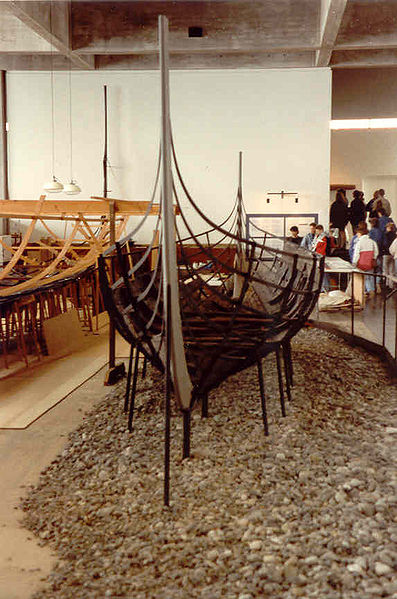
Prior to the Skuldelev finds, it was widely believed that the Vikings who colonized Iceland, Greenland, and North America sailed off in ships like the Ghosted ship. The discovery of Skuldelev 1 put an end to this misconception.
